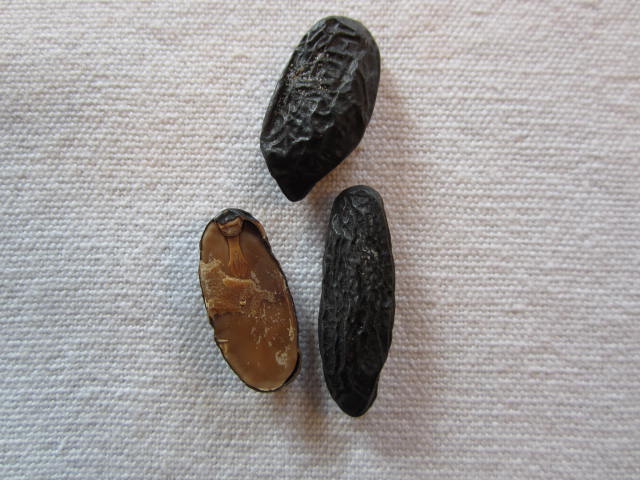|
Retusin (isoflavone)
Retusin is an O-methylated isoflavone, a type of flavonoid. It can be found in Fabaceae species like '' Dipteryx odorata'', in ''Dalbergia retusa'' and in ''Millettia nitida ''Callerya nitida'' is a species of flowering plant in the family Fabaceae, native to south-central and southeast mainland China, Hainan and Taiwan. It was first described by George Bentham in 1842 as ''Millettia nitida''. ''Callerya nitida'' ...''. It can also be found in '' Maackia amurensis'' cell cultures.Isoflavonoid production by callus cultures of Maackia amurensis. S.A Fedoreyev, T.V Pokushalov, M.V Veselova, L.I Glebko, N.I Kulesh, T.I Muzarok, L.D Seletskaya, V.P Bulgakov and Yu.N Zhuravlev, Fitoterapia, 1 August 2000, Volume 71, Issue 4, Pages 365–372, References --> O-methylated isoflavones Catechols {{aromatic-stub}--> O-methylated isoflavones Catechols {{aromatic-stub ... [...More Info...] [...Related Items...] OR: [Wikipedia] [Google] [Baidu] |
Dipteryx Odorata
''Dipteryx odorata'' (commonly known as "cumaru", "kumaru", or "Brazilian teak") is a species of flowering tree in the pea family, Fabaceae. The tree is native to Central America and northern South America and is semi-deciduous. Its seeds are known as tonka beans (sometimes tonkin beans or tonquin beans). They are black and wrinkled and have a smooth, brown interior. They have a strong fragrance similar to sweet woodruff due to their high content of coumarin. The word ''tonka'' is taken from the Galibi (Carib) tongue spoken by natives of French Guiana; it also appears in Tupi, another language of the same region, as the name of the tree. The old genus name, ''Coumarouna'', was formed from another Tupi name for tree, ''kumarú''. Many anticoagulant prescription drugs, such as warfarin, are based on 4-hydroxycoumarin, a chemical derivative of coumarin initially isolated from this bean. Coumarin, however, does not have anticoagulant properties. Biology of the tree The tree grow ... [...More Info...] [...Related Items...] OR: [Wikipedia] [Google] [Baidu] |
Dalbergia Retusa
''Dalbergia retusa'' (Caviuna, Cocobolo, Cocobolo Prieto, Funeram, Granadillo, Jacarandáholz, Nambar, ñamba, Nicaraguan Rosewood, Palisander, Palissandro, Palo Negro, Pau Preto, Rosewood, Urauna) is a plant species in the genus ''Dalbergia'' found in Pacific regions of Central America, ranging from Panama to southwestern Mexico. It produces the cocobolo wood. It is a fair-sized tree, reported to reach 20–25 m in height. This is probably the species contributing most of the wood in the trade. Because of the wood's great beauty and high value, the trees yielding this wood have been heavily exploited and are now rare outside national parks, reserves, and plantations. Retusin, an O-methylated flavonoid, is produced by the tree. See also * Na 'Aina Kai Botanical Gardens * Rosewood References External links * * retusa ''Retusa'' is a genus of very small head-shield sea snails or barrel-bubble snails, marine gastropod mollusks in the family Retusidae.Bouchet, P.; Gofas, ... [...More Info...] [...Related Items...] OR: [Wikipedia] [Google] [Baidu] |
Millettia Nitida
''Callerya nitida'' is a species of flowering plant in the family Fabaceae, native to south-central and southeast mainland China, Hainan and Taiwan. It was first described by George Bentham in 1842 as ''Millettia nitida''. ''Callerya nitida'' produces a number of compounds among which genistein-8-C-β-D-apiofuranosyl-(1→6)-O-β-D-glucopyranoside, calycosin, isoliquiritigenin, formononetin, gliricidin, 8-O-methylretusin, dihydrokaempferol, biochanin, afromosin and hirsutissimiside F interact with thrombin, while sphaerobioside, formononetin-7-O-β-D-apiofuranosyl-(1→6)-O-β-d-glucopyranoside, genistein-5-methylether-7-O-α-L-rhamnopyranosyl-(1→6)-O-β-D-glucopyranoside, retusin-7,8-O-β-D-diglucopyranoside, symplocoside, ononin, genistin, afromosin-7-O-β-D-glucopyranoside, lanceolarin, liquiritigenin Liquiritigenin is a flavanone that was isolated from ''Glycyrrhiza uralensis'', and is found in a variety of plants, including ''Glycyrrhiza glabra'' (licorice ... [...More Info...] [...Related Items...] OR: [Wikipedia] [Google] [Baidu] |
Maackia Amurensis
''Maackia amurensis'', commonly known as the Amur maackia, is a species of tree in the family Fabaceae that can grow 15 metres (49 ft) tall. The species epithet and common names are from the Amur River region, where the tree originated; it occurs in northeastern China, Korea, and Russia. Only reaching about 15 feet (4.6 m) tall in the American midwest, Amur maackia tolerates severe dryness, cold and heavy soils. More interesting than the summer flowers are the unfolding buds in spring which appear silvery and showy like flowers with frost on them. Named for Karlovich Maack (Richard Maack), a 19th-century Siberian explorer who discovered the tree in the Amur River region on the border between Siberia and China. Chemistry The isoflavones daidzein, retusin, genistein and formononetin and the pterocarpans maackiain and medicarpin can be found in ''M. amurensis'' cell cultures. The quinolizidine alkaloids tetrahydroleontidine and 11-epileontidane have been isolated from the ... [...More Info...] [...Related Items...] OR: [Wikipedia] [Google] [Baidu] |
